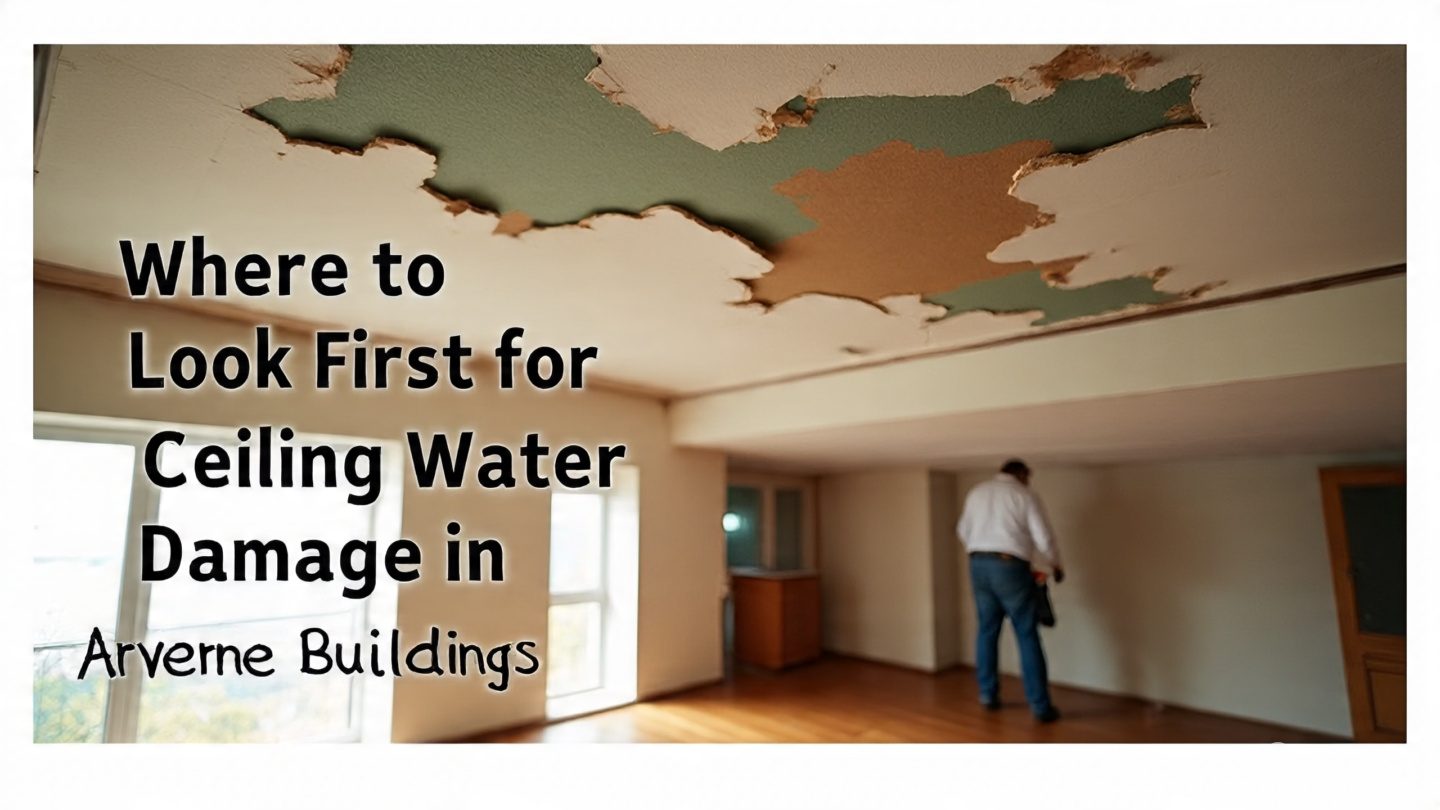Picture this: you step into your Arverne apartment one rainy afternoon, only to spot a mysterious stain creeping across your ceiling. Panic might set in, but don’t worry—you’re not alone in this. Ceiling water damage is a common issue for coastal neighborhoods like Arverne, where storms and humidity can be relentless houseguests. Knowing where to look first for ceiling water damage in Arverne buildings can save you time, money, and a whole lot of stress down the road.
Start at the Usual Suspects: Corners, Fixtures, and Directly Below Bathrooms
If you’re searching for the sneaky beginnings of water damage, your best bet is to check the corners of each ceiling first. Water tends to travel along beams and joists, so corners are often the first places to show discoloration or bubbling paint. Next, pay close attention to areas where light fixtures, fans, or sprinklers are installed. These spots are often vulnerable because water can seep through even the smallest gaps around electrical boxes or mounting plates.
Another prime location? Directly beneath bathrooms or laundry rooms that sit above your unit. Even a tiny leak from a pipe or a loose tile in the bathroom above can lead to a soggy, stained ceiling below. Don’t forget to check for softness when you press gently on the ceiling—if it feels spongy or gives way, water has already started to weaken the material.
Table: Key Features to Watch in Arverne Ceilings
| Key Feature | What to Look For | Why It Matters |
|---|---|---|
| Corners & Edges | Stains, peeling paint, mold | Water collects in low points and travels along edges |
| Ceiling Fixtures | Rust around bases, flickering lights | Leaks can seep through fixture openings |
| Directly Below Bathrooms | Yellowish spots, bubbling texture | Common area for pipe leaks or overflow |
| Attic or Roof Access | Wet insulation, visible drips | Roof leaks often show up here first |
Keep Safety at the Forefront
Before you climb up on a chair or poke at a sagging spot, hit pause and think safety first. Water-damaged ceilings can be weaker than they look, and the last thing you want is plaster or drywall crashing down unexpectedly. If there’s any sign of major sagging or leaks near electrical wiring, avoid touching anything until you’ve shut off the power to that area and called in a professional. Remember, safety isn’t just about physical injury—it’s also about avoiding mold exposure, which can trigger allergies or breathing problems.
“It’s better to spend five minutes playing it safe than five hours fixing a bigger mess.”
Budgeting for Repairs: What Will It Cost?
When you spot water damage early, your wallet will thank you. Minor stains or peeling paint often need just a bit of patching and paint, which can be a quick DIY fix for less than the cost of a weekend pizza. But if you leave it too long, hidden leaks can rot the beams or ruin insulation, making repairs much pricier. In Arverne, getting a pro to patch up a small section might run a couple hundred bucks, while major damage could reach into the thousands—especially if the leak is ongoing and you need mold remediation.
The best way to keep your costs down? Jump on the problem as soon as you spot it. Even if you’re not sure where the water is coming from, a quick inspection can keep things from spiraling out of control.
Emergency Service: When to Call for Help
Sometimes, water damage isn’t just a slow drip—it’s a sudden gush. If you notice water pouring through your ceiling, or if the surface starts to bow and sag rapidly, don’t wait. Turn off the main water supply if you can do so safely, and call an emergency repair service right away. In Arverne, plenty of handy pros are just a phone call away, and many offer 24/7 help for exactly these kinds of situations.
Acting fast not only saves your ceiling—it can also prevent water from seeping into your walls and floors, making an already bad day much, much worse. Even if you’re dealing with a small leak, it’s worth having a professional check things out so you know you’ve nipped the issue in the bud.
FAQ: Ceiling Water Damage in Arverne
Q: How can I tell the difference between old and new water stains?
A: Old stains usually look dry and have a brown or yellow ring. Fresh stains feel damp and may look darker or spread over time.
Q: Should I try to fix water damage myself?
A: Small cosmetic fixes are okay for DIY, but if you see mold, sagging, or active leaks, it’s best to call a professional to avoid bigger problems.
Q: Is ceiling water damage covered by insurance?
A: It depends on your policy and the cause of the damage. Sudden leaks are usually covered, but gradual issues might not be. Always double-check with your provider.
Wrapping Up: Stay One Step Ahead
Living in Arverne means being prepared for whatever the weather throws your way—including that pesky ceiling water damage. Keep an eye on those corners, fixtures, and any areas below bathrooms. Always put safety first and don’t hesitate to call in the pros if things look serious. By acting quickly, you’ll keep repair costs low and your home feeling safe and dry. Remember, when in doubt, it’s always better to check than to hope for the best when it comes to ceiling water damage in Arverne buildings.
Read More: Arverne Water Damage Restoration



